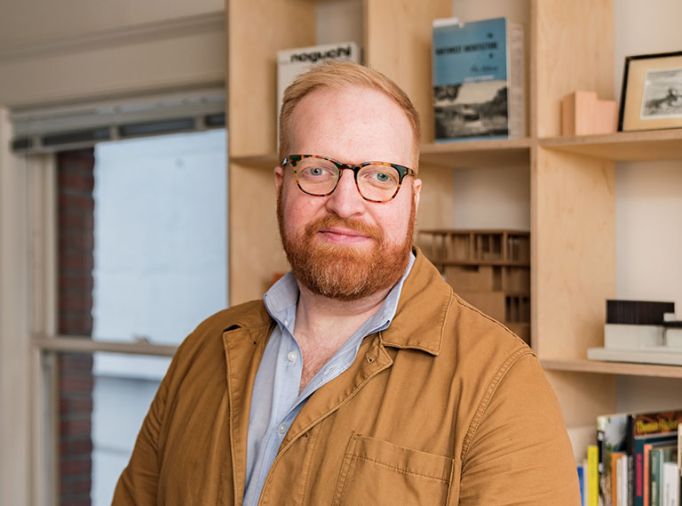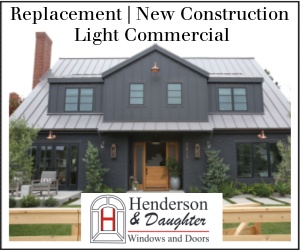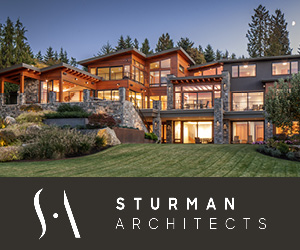Can you trace your interest in architectural design back to a particular time or influence?
My interest in architecture was influenced by family. My aunt, a high school art teacher, had a house filled with her drawings, paintings, sculpture, and artifacts from adventures around the world. I would spend summers in Indiana at my grandparents’, where I would watch my engineer grandfather tinker and draft his next project on his drafting table. He taught me how to draw, sketching on church bulletins on Sundays. In middle school, I found a book on Frank Lloyd Wright at a local library. I was instantly hooked, and my mom encouraged this interest, constantly slipping architecture books into my stacks of skateboarding magazines.
Having worked on projects in both Portland and Seattle, are there particular differences in what clients are looking for?
Working primarily on houses in the Seattle area, and commercial buildings in Portland, I see a fundamental difference in the culture of private life being more of people’s focus in Seattle, and community the focus in Portland. This has long been the case, with the Seattle’s booming industry and Portland’s emphasis on planning, neighborhoods, and the pedestrian, setting a national precedent. I feel these differences have recently begun to blur in the work from home era, where public and private life take place in the home, and need not be directly in the city.
You utilize a variety of building materials, what do you find works best for your designs?
Often, a primary building material is identified early in the design process that will best situate and characterize the project within the cultural and physical place that it is being designed for. Each material has a specific, inherent physical and expressive potential, and once selected, begins to make decisions for you, and continues to refine its role and how it is expressed.
How has your varied career, from book publication to serving as an adjunct professor, shaped your vision?
It is all about architecture. I was fortunate enough to realize what I wanted to do early, and I’ve seen that the architects I admire have survived through continually balancing the development of their mind with the development of their craft. Teaching and research continue to do both for me, and strengthen and enrich my ideas about architecture, while simultaneously giving back to the next generation, something that’s very important to me.
What is your ideal project?
An ideal project is a client looking to create something very special, but with an open mind to what it wants to be, as well as the process to find it.
What did you take from your time in Arizona, New York, Paris and Berlin and how did it influence your design style?
From Arizona, a sense of purity, mass, and the importance of designing buildings of heirloom quality. From New York, the energy of the city, progress, fearless experimentation. From Paris, the origins of modern art and architecture, Corbusier, the Grands Projets of Mitterrand, and a love for getting lost in the alleys, courtyards, and passages of the historic metropolis. And from Berlin, a love of concrete, the importance of atmosphere, and a precision approach to craft that is different in tone and history to that of the Pacific Northwest.
When you were growing-up, do you recall feeling amazed by design?
Discovering Frank Lloyd Wright’s “Fallingwater” in middle school, I could not stop looking at the pictures, I think I even hung a poster up of it in my room.
For more information visit: www.danieltoole.com






